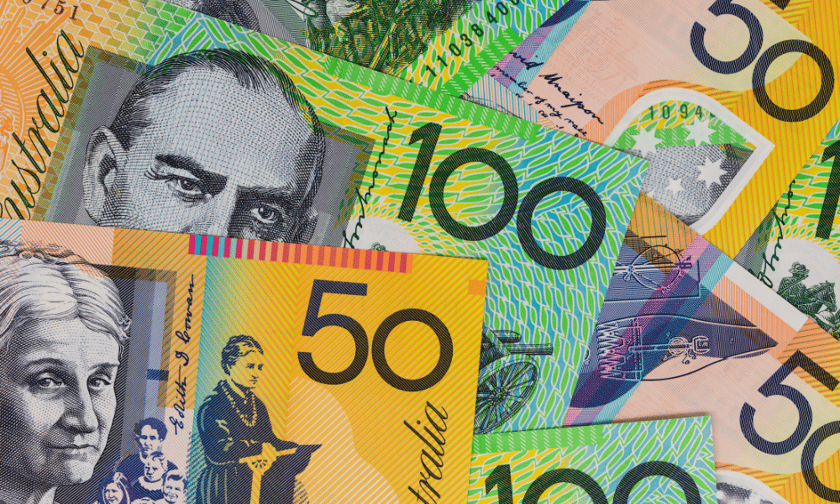

The Reserve Bank of Australia (RBA) isn't making any April Fool's jokes this year. The central bank has decided to hold the official cash rate (OCR) at 4.10% for the moment.
The nation's central bank met for a two-day meeting — the first as a dual board, which includes one board to set the cash rate and another one for governance — on Monday and Tuesday to discuss monetary policy.
"There are notable uncertainties about the outlook for domestic economic activity and inflation," RBA said in a statement released Tuesday, regarding its decision.
"Inflation has fallen substantially since the peak in 2022, as higher interest rates have been working to bring aggregate demand and supply closer towards balance," the statement read. "Recent information suggests that underlying inflation continues to ease. Nevertheless, the Board needs to be confident that this progress will continue so that inflation returns to the midpoint of the target band on a sustainable basis. It is therefore cautious about the outlook.
"Private domestic demand appears to be recovering, real household incomes have picked up and there has been an easing in some measures of financial stress," the release continued. "However, businesses in some sectors continue to report that weakness in demand makes it difficult to pass on cost increases to final prices. At the same time, a range of indicators suggest that labour market conditions remain tight."
The RBA last cut the OCR at its February meeting — by 25 basis points, down from 4.35% — the first rate cut since November 2023.
February's rate cuts set off a wave of optimism across the market. Many, including homeowners and investors, were hopeful for further rate reductions later this year. But ahead of Tuesday's meeting all four of Australia's Big Four Banks — Commonwealth (CBA), Westpac, National Australia Bank (NAB) and ANZ — while anticipating rate cuts at some point later in the year, were expecting the RBA to maintain the current cash rate at 4.10% this time around.
"We think that [February rate cut was] the first of a series of cuts over the next 12 months," Adam Brown, NAB broker distribution executive, told Australian Broker. "Our forecasts are for another two [rate cuts] this year, and sort of moving towards the target range of in the low three [percent] into 2026."
Luci Ellis, chief economist at Westpac Group, added in a note that: "While we still expect a rate cut in May, back-to-back cuts in February and April were never on the table. The RBA was too hawkish in its rhetoric last month for that, and the Board made clear that last month’s cut did not foreshadow more. Cutting again at the April meeting would therefore be damaging to its credibility."
Still, February's rate cut was enough to motivate some would-be buyers (and current homeowners) to consider buying or upgrading.
"It was only a 0.25% cut," Tony MacRae, chief commercial officer of Bluestone Home loans, told Australian Broker last month. "But what it did was give people confidence that the rates are not going to keep rising."
Brown added: "On the back of that [February rate cut], we have seen business confidence and consumer confidence increase, and that was not unsurprising. I think with the rate cuts, it just gives a little bit more relief for households. And they've needed it.
"Home lending in the first quarter, at least this year, has been really quite strong," he continued. "It's well up on last year, and we are seeing a lot of pre-approvals. That is, customers looking to get their finances in order to confidently go and bid. Because we've still got a scarcity of housing, and the scarcity of housing is meaning house prices are continuing to be pretty strong and resilient. And we've got different pockets of the national market performing in different ways. And so customers are having to be ready with approvals in principle. So there is an increased number of approvals in principle in the market. And definitely increased levels of activity. And we are seeing, in the run to Easter, increasing numbers of listings too."
Australia's unemployment rate is also on hold. In March, the Australian Bureau of Statistics released its latest unemployment report, showing that the nation's unemployment rate remained unchanged at 4.1% in February, while the nation's labor participation rate fell. Market players were quick to point out that low levels of unemployment could delay the RBA's future interest rate decisions. The central bank uses both employment levels and inflationary data to determine the direction of rates.
Meanwhile, Inflation has also been trending down in Australia. The annual trimmed mean inflation fell to 2.7% during the February Consumer Price Index (CPI) reading, down from 2.8% in the last quarterly reading, and closer to the RBA's target 2.5% midpoint. The bank has previously said it is targeting an inflation rate between 2% and 3% before it will cut rates.
The RBA's next meeting is scheduled for Monday May 19 and Tuesday, May 20.
